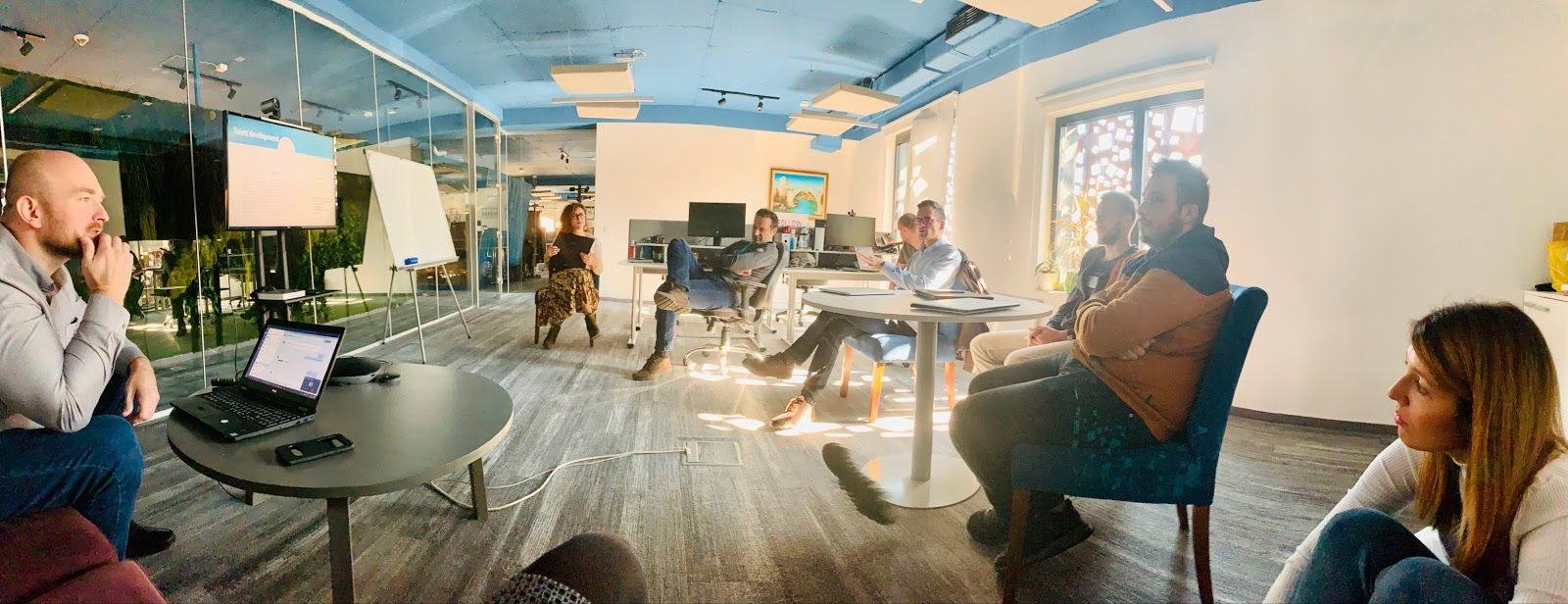Creating and continuously developing a successful organization starts with effective and inspiring leadership. John C. Maxwell once said: “The single biggest way to impact an organisation is to focus on Leadership Development. There is almost no limit to the potential of an organization that recruits good people, raises them up as leaders and continually develops them.”
Leaders truly have a lot on their plate. In addition to providing clarity in the business direction, they’re also responsible for setting up the foundations of company culture, as well as providing their team members with feedback, enablement and support. However, while leaders are expected to help their team members transform from larva to butterfly, what tends to be neglected is that they too need to complete their own metamorphosis.
Actually, it’s rather common for people in leadership positions to feel frustrated with how they perform as leaders. The reason? Employees typically get promoted to leadership positions due to their strong “core” (in IT, technical) competencies, with little to no leadership training. It’s only natural that they end up feeling frustrated and seeing themselves as underperforming compared to their time as individual contributors.
Knowing that leaders need as much support and training in their leadership transformation as they had in the development of core competencies, we at Maestral created our own LEAD (Leadership Empowerment and Development) Program. The purpose of this training program isto enable our leaders to effectively develop and guide others, as well as to enhance the soft skills necessary to succeed in their specific roles. It’s designed for both future and first-time leaders, but it also serves as a guideline for mentors and those already in leadership roles in Maestral.
The Essence of the Program
Every initiative in Maestral is built around our company core values: People First, Culture of Trust, and Passion for Growth. The intention behind this value-centered approach is to provide every individual with the same opportunity to grow both personally and professionally, in a safe environment where they feel supported and appreciated.
The specific goals of this particular program are:
- To explain what it means to be a Lead in Maestral
- To communicate how important leaders are to us, their teams and the entire company
- To strengthen partnership relations between leaders and the Human Potential team
- Finally, to provide the participants with tools and advice on how to approach different people-related situations
In order to provide a clear understanding of the behaviors required of a Maestral leader and the levels of performance necessary for achieving success, we first set out to define the key competencies a person in a leadership position must possess.
Leadership Competencies
Maestral recognizes three leadership competencies essential for employees with leadership responsibilities:
- Strategic Outlook: Taking a visionary (i.e. comprehensive and long-term) approach to thinking about the company, market, clients, technology trends and one’s team. Shaping the strategy, vision, mission and long-term direction of the company to win in the future.
- Transforming Strategy Into Action: Focusing on moving the organization from the current state to the desired state by translating the vision into an action plan and measurable results. Aligning systems with the vision, bridging skill and system gaps, and eliminating barriers to achieving the desired state.
- Empowering Others: Focusing on providing others with a clear direction, motivation and support for the development of their individual skills and abilities. Modeling the appropriate standards of behavior.
Every leader must be able to exhibit all three leadership competencies in a way that corresponds to their level of leadership, depending on whether they are leading individual contributors or other leaders.
After specifying what it means exactly to be a Maestral leader, we went on to define the most effective ways of transferring the desired skills and competencies to people considered for leadership positions.
The Main Training Areas
Based on the leadership competencies and leadership goals of each role in our job architecture, we identified 5 main training areas. In LEAD Cycle 1, these training areas are divided into 5 modules, each consisting of 2 different courses. Together, they touch upon all the topics of significance for a true Maestral leader.
The modules of the LEAD Program, designed to be implemented over a period of 3 months, are as follows:
Steps After LEAD Cycle 1
During these intense and productive 3 months, participants’ engagement and progress on each module is tracked, and they’re provided with personalized feedback. Depending on their specific needs and goals, they may choose to engage in one or more follow-up activities, the main three being:
- 1-2-1 follow-up sessions on relevant topics
- Discussions in small groups
- Sharing relevant and interesting materials
At the end of the program, participants are asked to share their feedback and suggestions for improvement.
First Program Iteration: Key Takeaways
The first cycle of our LEAD Program was finalized in December 2020. Although the conditions for implementation of this program were not ideal, as it was held in the midst of the pandemic, we managed to engage the majority of our participants and motivate them to work further on their development. This goes to show that, even in the most challenging times, transparent communication and willingness to collaborate are key to success and building a cohesive community.
The participants described the program as a very engaging and insightful experience, which helped them better understand their roles and provided them with new tools and knowledge to lead their teams.
What Now?
We believe that mutual support, collaboration and willingness to work together on strengthening our leadership skills is the key to nurturing effective teams and a cohesive community. The best way to do that is to provide our current and prospective leaders with proper training and leadership onboarding plans, so that everyone can successfully complete their own metamorphosis and then help others transform from larva to butterfly.
On that note, the plan is to continue with follow-up activities with the first program alumni in the next period, focusing on personal feedback provided by the participants. Also, we’ll be tracking the performance and competency profiles of other employees to detect new leadership talent. When opportunities for these new candidates open up, a new iteration of the program will be set in motion.



